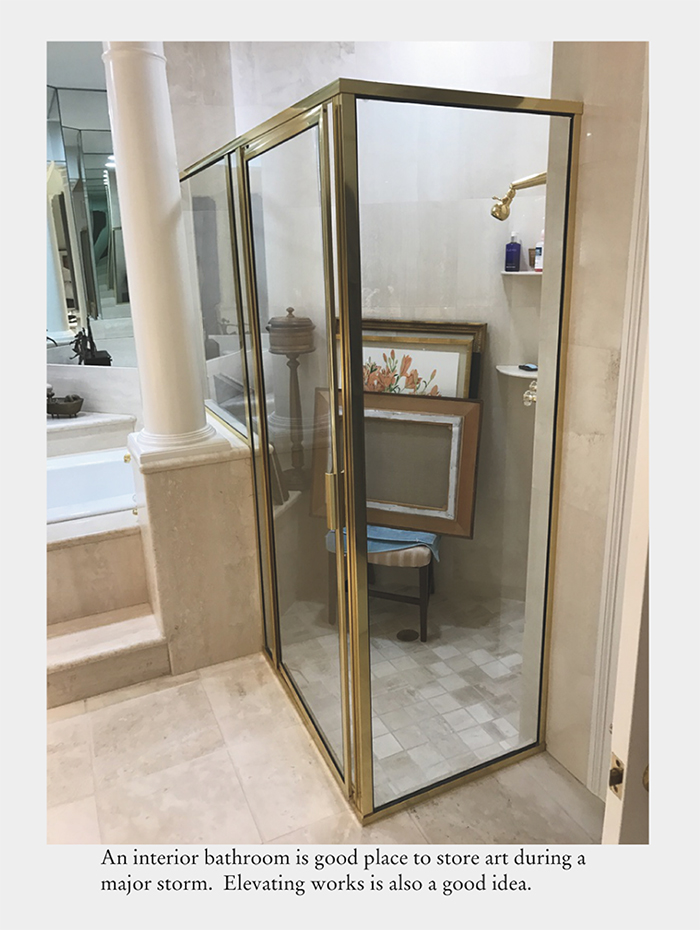|
Preparing for a Hurricane
Dear Artsperts:
In the hours before Hurricane Irma struck Naples I began to worry that maybe I should have done more to protect my art. Do you have advice on what I should do before the next Hurricane blows this way?
Weathering the Storm
Dear Storm,
Hurricanes can bring high winds and/or high water and aren’t always predictable. Our area has experienced its fair share over the years! In general, newer homes and high-rise condominiums with impact glass and built-up from the street level can protect artwork without much concern. However, there are still steps you can take in preparation for and after a hurricane to protect works of art.
The ideal measure is to move artwork out of the forecasted path. If you have an offsite storage facility to move works of art away from coastal or flood regions, preferably above the first floor, that is a good option. If you are evacuating by car and have the space, wrap very valuable or sentimentally valuable objects - even just in thick towels or blankets - and bring them with you.
If those options are not possible, given the short notice we sometimes have with hurricanes changing paths, there are other methods to protect works in your home. Making sure the works in your home are hanging up on the walls is an easy first step. You may decide to move valuable works to interior rooms, but keep them off the floor, especially if you are on the ground level. An added step, if possible, is to use plastic sheeting to wrap works. Plastic sheeting can be found in hardware stores. Wrap the works as you would a gift and seal using heavy packing tape. This will help keep moisture out.
Often the real problem occurs after the storm has passed when standing water, open homes, and loss of electricity become the primary issues of concern. Unwrap the works wrapped in plastic to let them breathe. Ideally works should be moved to a facility with air conditioning as soon as possible. It is long exposure to humidity, water damage and puncture that are of concern. The canvas may loosen in humidity over time, when the air conditioning suddenly comes back on, the canvas will tighten quickly causing the paint to crack. Professional restoration can correct most issues. For extremely high value works, look for fine art conservation firms. There are just a few across the nation that specialize in this level of conservation, which is museum quality restoration.
As an added note, be cautious about art newly available to the art market that may have been damaged by a storm. Just like with used cars, after a storm some unscrupulous individuals may try to sell their damaged artwork without paying for restoration first. Be careful when buying art at auction especially if you cannot physically examine the art yourself. Be sure to examine the backs of canvas and the back of works to ensure no water damage or recent reframing. Look for signs of mold, mildew or fungus.
Often the real problem occurs after the storm has passed when standing water, open homes, and loss of electricity become the primary issues of concern. Unwrap the works wrapped in plastic to let them breathe. If works can be moved to a facility with air conditioning then that would be the ideal solution, assuming you can retrieve them at all. Remember that artists created paintings long before air conditioning so they are not that fragile. It is long exposure to humidity, water damage and puncture that are of most concern. Paintings on canvas will loosen with humidity and should be brought back to their normal taught state slowly when the power returns.
In the end protection of life is of greater concern than that of material objects, but we can understand your interest in wanting to save your art as well.
Sincerely,
The Artsperts
|


